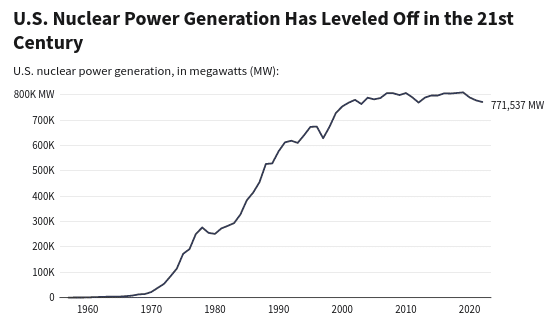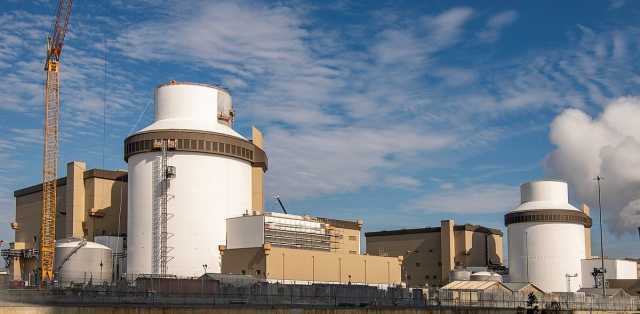We are talking about a great success: the time and cost of construction were exceeded by only two times relative to the design. Against the background of the previous attempt to build a new power reactor in the United States, the situation is so rosy that some industry observers started talking about the revival of the industry.
Until 2023, the last successful experience of building a nuclear power unit from scratch in the United States was in 1996, but even then it was about completing an almost finished (only frozen in the 1980s) facility. In 2007, against the backdrop of high oil prices, an attempt was made to complete another frozen nuclear power reactor — Vogtl-2. Despite the fact that it was 80% ready back in the 1980s, it was possible to finish the remaining 20% only by 2016.
All this created big problems for the industry, since the average age of 92 power reactors available in the USA, the construction of which began deep in the XX century, exceeds 40 years. They can extend their service life up to 60-80 years, but even in this case, around the middle of the century, there will be a situation in the country when power plants, currently producing 0.8 trillion kilowatt-hours per year, will be stopped by age, and there will be nothing to replace them with.
By local standards, the commissioning of the new Vogtl-3 power unit is a great success: the construction period and price exceeded the design by only two times, by seven years and $ 8.5 billion per reactor. This is a good result against the background of a previous attempt of this kind in the United States, which a few years ago ended with the closure of the project in South Carolina after spending nine billion dollars on it in vain.
It is also important that the AP1000 reactor, designed by Westinghouse and used in the new power unit, is the first such reactor in the United States, and in a sense, the first in the world. Although China formally commissioned the first AP1000 reactor back in 2018, the American project was mainly there — the "iron" was manufactured in Asia. American builders, according to local customs, could not use large components from Asia, so in fact the new reactor has many design differences from the "Chinese" AP1000 and a much higher price.
 |
| The prolonged stagnation of nuclear power in the United States resembles a similar picture in the rest of the world. Will it be possible to reverse the trend?. |
| Source: Wikimedia Commons |
Nevertheless, the AP1000 also retained its key features in the USA — a power of 1.1 gigawatts (slightly weaker than VVER-1200) and the dominance of passive security systems over active ones. A reactor of this type, in case of loss of power supply (that is, stopping the cooling pumps), can be cooled passively due to the flow of water into it from a large, a couple of thousand tons, flowable tank with water, providing heat removal without pumps for 72 hours. It is believed that this is enough to restore power to the cooling pumps or replenish the water supply in the passive cooling tank.
An important point: the Vogtl-3 power unit will not be a single success. Already in 2024, a similar Vogtl-4 should start working. In this regard, many industry observers in the United States hope for the revival of nuclear energy in this country.
Their hopes are based on the fact that nuclear power plants — the main source of carbon—free electricity in the United States and the world today - can work 24 hours a day, and SES and wind farms, although carbon-free, are not able to ensure the operation of the power system without blackouts with any economically real amount of lithium or other energy storage devices. In such a situation, investments in the atom for the States look like a more realistic way of a carbon-free transition.
However, for its implementation, it is necessary to move from the construction of one power unit in several decades, as in the USA today, to serial construction, as in China or Russia. While the commissioning of blocks happens rarely, there are no experienced personnel for their construction, which is why the time and cost grow twice as high as the design (and in Europe — even stronger). If new power units follow Vogtl-3 this year and Vogtl-4 next year, nuclear power in the United States has certain chances of a multiple drop in construction prices and, as a result, a real revival.

